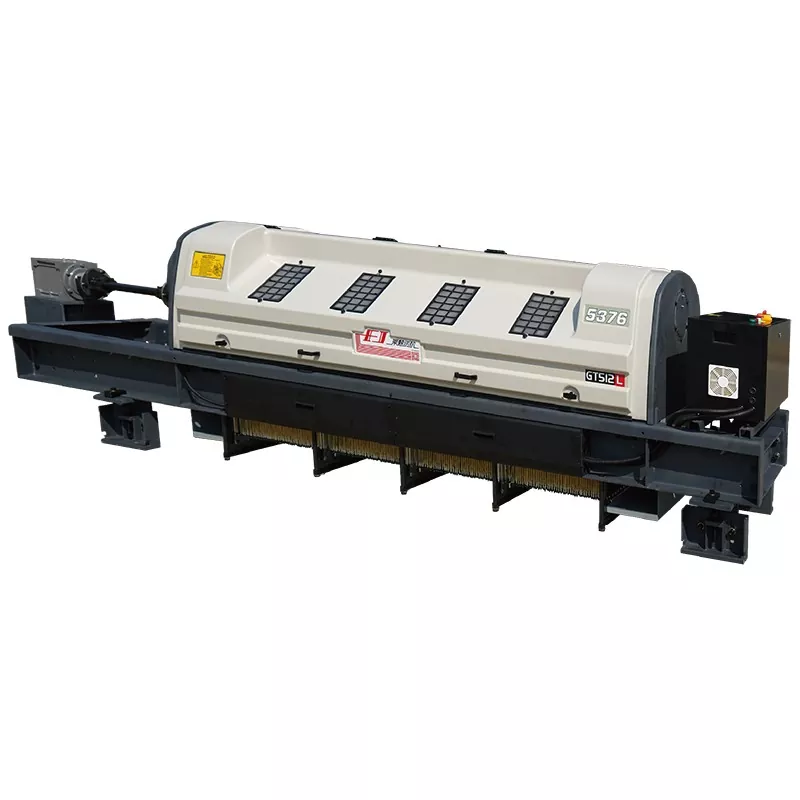How Does Electronic Jacquard Work?
Inside the GT512L High-Performance Model Shaping Textile Factories
Ever run your hand over a fancy woven blanket with those tiny, intricate patterns? Or a tailored suit fabric that has subtle designs you almost miss? Even high-end curtains with detailed motifs—chances are, an electronic jacquard machine made all that possible. But if you’re like most folks, you’ve probably wondered: How the heck does this thing actually work? And why’s a model like the GT512L High-Performance Electronic Jacquard become the go-to for textile factories everywhere? Let’s break it down—no fancy engineering jargon, just straight talk about how this machine turns plain old thread into something that looks like art.
First, let’s get the basics out of the way: A jacquard machine (whether it’s electronic or the old mechanical kind) is what lets weavers make those complex patterns in fabric. Before electronic ones existed, weavers used these huge mechanical setups with hundreds of cords and punch cards—think of it like a 19th-century computer, but for fabric. But electronic jacquards, especially high-performance ones like the GT512L, totally flipped the script. They swapped out punch cards for digital tech, which makes patterns way easier to tweak, faster to produce, and so much more precise.

So, how does the GT512L actually do its job? Let’s start with the “heart” of the whole process: the threads. When you’re weaving fabric, there are two sets of threads. First, the “warp”—those are the ones that run up and down, fixed tight on the loom. Then the “weft”—that’s the one that gets woven left and right through the warp. To make a pattern, some warp threads need to go up, others down, so the weft can slide through. That little gap? It’s called “shedding.” The GT512L’s whole job is to control which warp threads move up or down, and when—so it creates exactly the pattern the weaver wants.
Here’s where the GT512L’s tech really shines. Instead of those old mechanical cords, it uses tiny, super-responsive “solenoids”—you can think of ’em as small electromagnetic switches—and a digital control system. First, the weaver loads a pattern into the machine’s computer. Usually, that’s a design file from software like CAD—nothing too fancy, just a digital version of the pattern they want. Then the GT512L takes that digital pattern and turns it into instructions for each solenoid. Each solenoid is hooked up to a single warp thread (or a small group, depending on how detailed the pattern is). When the loom fires up, the solenoids kick into gear: some pull their warp threads up, others leave ’em down, and that creates the gap—the “shed”—for the weft thread to slide through.
But what makes the GT512L a “high-performance” model? For one thing, it can handle a ton of warp threads—up to 512 individual ones, which is why it’s called the “512” in GT512L. That means it can make super detailed patterns—like tiny floral motifs or intricate geometric designs—that older machines would struggle with. And it’s fast, too: Mechanical jacquards might take minutes to switch between patterns, but the GT512L can swap designs in seconds. No need to stop the loom, rethread things, or rearrange cords. “Before we got the GT512L, changing a pattern meant shutting down the loom for an hour or more,” says Carlos, a floor manager at a textile factory in North Carolina. “Now? We load the new design on the computer, hit ‘start,’ and it’s weaving the new pattern in 30 seconds flat. Cut our downtime in half—no joke.”
Another big plus is precision. The GT512L’s solenoids are calibrated so well, they move warp threads with barely any error. No more uneven patterns or missed threads—something that used to be a huge headache. That’s a big deal for factories making high-end stuff, like luxury upholstery or designer clothes. Even a tiny mistake can ruin a whole bolt of fabric, and that’s money down the drain. “With our old jacquard, we had to check every single yard of fabric for mistakes,” Carlos adds. “Now with the GT512L? We spot maybe one error every 100 yards—if that. Saves us so much time and waste, it’s crazy.”
We can’t forget about ease of use, either. The GT512L has this simple touchscreen interface—so even weavers who aren’t total tech experts can learn to use it. And if a thread breaks (which happens sometimes, even with the best machines), the GT512L alerts the operator right away and pauses the loom. No more waiting until a whole section of fabric is ruined before you notice something’s wrong. Plus, it’s built to run for hours on end. Textile factories often operate 24/7, and the GT512L’s durable parts—think heavy-duty solenoids and a cooled control box—mean it can keep up without overheating or breaking down.
Let me put it in plain terms: The GT512L takes all the guesswork out of complex weaving. Let’s say a factory wants to make a blanket with a pine tree pattern. The designer draws up the pine tree in software, saves it as a file, and loads it into the GT512L. Then the machine tells each solenoid when to lift its warp thread to make the tree’s needles, the trunk, even the background. As the weft thread weaves through, the pattern starts to take shape—row by row—until you’ve got a blanket covered in perfect little pine trees. No punch cards, no tangled cords, just smooth, fast, precise weaving.
But why does this matter for everyday people? Because the GT512L (and machines like it) makes those complex, beautiful fabrics way more accessible. Before, only luxury brands could afford the time and cost of making intricate patterns. Now, even mid-range brands can produce patterned fabrics at a lower cost. Think affordable throw pillows with unique designs, or kids’ clothes with fun characters—all of that’s possible because the GT512L is so efficient.
“We used to only make plain fabrics,” says Maria, who owns a small textile mill in Georgia. “Complex patterns were just too slow and expensive—we couldn’t justify it. But since we got the GT512L? We’ve started making custom patterned tablecloths and napkins for restaurants. Something we never could’ve done before. It opened up a whole new side of our business—total game-changer.”
So, to wrap it up: Electronic jacquards like the GT512L work by using digital tech and those tiny solenoids to control warp threads. That lets ’em create precise patterns quickly and easily. They’re faster, more precise, and easier to use than those old mechanical models—and the GT512L’s high-performance design makes it a favorite for factories, big and small. Next time you see a woven fabric with a cool pattern, take a second to appreciate the machine behind it. The GT512L isn’t just a tool—it’s why that fabric looks as good as it does.
As textile tech keeps getting better, machines like the GT512L will only improve. Maybe soon, we’ll see even more complex patterns, or faster production times. But for now? It’s already changing the game—turning plain thread into something special, one precise weave at a time.




